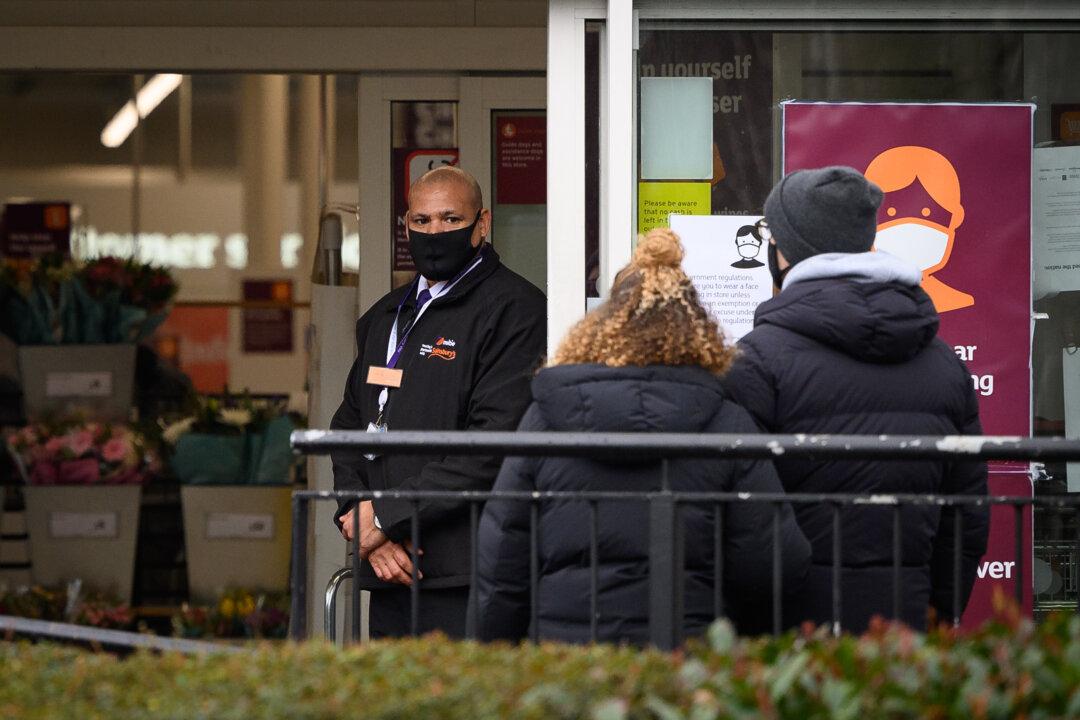The UK’s retail sector has seen an increase in violence and abuse against shopworkers, a survey has revealed, leaving the industry “frustrated” with the “poor” police response.
The British Retail Consortium (BRC) said that the number of violent and abusive incidents rose to 1,300 per day in 2022–2023. This compares to 870 cases per day a year before.
A “huge” increase was recorded in the number of abuse incidents, the BRC said, from 340 a day in the pre-pandemic period to 1,190 a day in 2022–2023.
“Shopworkers are often in a vulnerable situation, facing intimidation from someone potentially carrying a weapon and possibly under the influence of alcohol or drugs,” the survey said.
Under the plan, the police are meant to prioritise attending scenes of shoplifting involving violence against a shop worker. This applies to cases where “guards have detained an offender or where attendance is needed to secure evidence.”
Policing minister Chris Philp said that retailers should send CCTV footage of incidents to the police. Digital footage will then be run through the Police National Database using facial recognition technology to identify offenders.
Police Response
The BRC reported a growing dissatisfaction with the police response to incidents, with 60 percent of respondents describing them as “poor” or “very poor.”The number of incidents of violence and abuse reported to the police increased compared to the previous year, but went down compared to previous years. Retailers often failed to report incidents because they didn’t believe “that anything would happen as a result.”
They also cited a lack of staff time and difficulties with the reporting system as reasons not to contact the police.
Of all recorded incidents of violence and abuse, only 36 percent were reported to the police and just 8 percent resulted in prosecution.
Police forces don’t regard shop theft as “real” crime, retailers said, “particularly if it is under £200 in value.”
In England and Wales, the £200 threshold was introduced in the Anti-social Behaviour, Crime and Policing Act 2014. It means that shoplifters taking under £200 worth of goods face a maximum sentence of six months and can plead guilty by post.
Retail crime incidents are usually classified as “public order offences” in England and Wales. In comparison, under Scottish law, the assault and abuse of retail workers is categorised as its own separate statutory offence.
The BRC expressed “regret” at the UK government’s failure to follow the Scottish lead in introducing a standalone offence.
“The Protection of Workers Act in Scotland already provides additional protection to retail workers, so why should our hardworking colleagues south of the border be offered less protection? It is vital that government takes action—introducing a new standalone offence for assaulting or abusing a retail worker,” said BRC Chief Executive Helen Dickinson.
Tackling retail crime would save billions for the economy, the report said. The cost of retail crime now stands at £3.3 billion, which includes both actual losses and crime prevention costs.
Retailers lost £1.8 billion to customer theft in 2022–2023, or just under £5 million a day. This represents an increase from £950 million the year before.
The cost of theft comes on top of retailers’ expenses on measures such as CCTV and body-worn cameras for security personnel. Retailers invested in crime prevention up to £1.2 billion in 2022–2023, an increase from £722 million the previous year.







